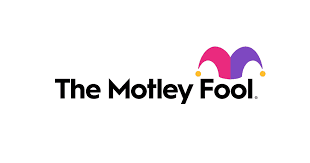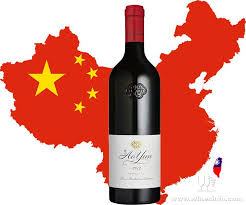With all the precautions we are taking, plus the natural barrier of the Pacific Ocean, Hawaii has nevertheless been recently clobbered by COVID-19. As of two days ago, it was speculated that maybe half of new cases were from the Omicron variant. The infection rate could well continue to increase as this strain gains prominence. Our football team pulled out of Hawaii Bowl on Friday and basketball team out of the Rainbow Classic yesterday because of pandemic protocols.
Hawaii status:
- Our total case count surged past 100,000 yesterday, which means that 7% of people living here have contracted COVID-19.
- However, the USA percentage is 15.9%, more than double that of Hawaii.
- The World average is 3.6%. Or, Hawaii has double the infection rate of the globe.
- We had 1828 new cases two days ago, our worst ever.
- 73.9% of people here have been fully vaccinated. Not sure about what percent has been boosted.
- While immunity is not guaranteed about catching this virus, vaccinations well protect you from hospitalization and death.
- Our positivity rate is 10%, but other locations are worse (two days ago):
- DC 108% (??, how is this possible?)
- Kansas 53.4%
- Vermont 51.8%
- New Jersey 48.5%
- Pennsylvania 48.2%
- Wisconsin 47.2%
- Hawaii was 6.9% two days ago
- California 2.7%
- Maryland -0.8% (again, how is this possible?)
- For the elderly, 70 years old and above in Hawaii:
- 9% of population
- 18% of all cases
- 37% of those hospitalized
- 45% of deaths
- Investments in renewable energy:
- Germany and France yielded returns of 178% over a five-year period, compared with -21% for fossil fuels.
- USA 220.3% for renewables and 97.2% for fossil fuels.
- 10 companies to benefit most from global warming:
- #10 NV5 Global Inc. (NASDAQ: NVEE): based in Florida and is into underground power lines and energy conservation.
- #9 SunPower Corporation (NASDAQ: SPWR): sells crystalline silicon photovoltaic cells using a solar cell invented at Stanford. However, already gained about 700% the past year.
- #8 Brookfield Renewable Partners LP (NYSE: BEP): operates over 200 hydroelectric plants and 100 wind farms, 19,400 MW throughout the world.
- #7 Plug Power (NASDAQ: PLUG): sells hydrogen fuel cell systems to replace conventional batteries in electric cars. However, has already jumped 1400% this past year.
- #6 Canadian Solar Inc. (NASDAQ: CSIQ): has delivered 52,000 MW of solar models in 150 countries.
- #5 Solaredge Technologies Inc. (NASDAQ: SEDG): Israel-based sells power optimizers, solar inverters and monitoring systems.
- #4 Pool Corporation (NASDAQ: POOL): into swimming pools.
- #3 First Solar Inc. (NASDAQ: FSLR): Arizona-based company sells solar panels and operates utility-scale PV power plants using cadmium telluride PV cells.
- #2 Enphase Energy Inc. (NASDAQ: ENPH): California-based solar company with a market cap of $22 billion. Sells software-driven home energy solutions.
- #1 NextEra Energy Inc (NYSE: NEE): Florida-based company has tripled its wind energy capacity over the last 10 years and operates 14,100 MW of wind farms. also into nuclear power. Owns Florida Power & Light. Hawaii rebuffed their attempt to buy Hawaiian Electric Industries. Tracked by 63 hedge funds.
- #1 BWX Technologies (BWXT)
- Nuclear company.
- Based in Virginia, it supplied nuclear components.
- #2 First Solar (FSLR)
- Mentioned above. Must be worthy.
- Focusing on increasing energy yield and grid stability.
- #3 Nestle (NSRGY)
- Swiss company, once criticized for using palm oil, now says that 77% of its food and drink are deforestration-free.
- Entering synthetic meat production.
- #4 Unilever (UL)
- UK/Dutch maker of consumer products like Lipton and Dove, aspires to be carbon positive by 2030.
- A climate-change leader.
- #5 Merck (MRK)
- That COVID-19 pill company.
- Will focus more on products for tropical and weather-related diseases.
- #6 Honeywell (HON)
- As residential and commercial buildings account for 40% of U.S. energy consumption, the company is now into heat pumps and home energy managers.
- While rather anemic more recently, this New Jersey firm is poised for growth.
- #7 General Motors (GM)
- As 29% (largest share) of emissions come from transportation, with Bechtel, they plan to build a network of EV stations.
- Also sells EVs.
- Over the past 150 years, the global temperature has only gone up by 1 F.
- So far our sea level has already risen by 7 inches over the past century.
- Carbon dioxide levels are the highest in 650,000 years.
- Less winter related illnesses. Cold weather is 20 times more fatal than warm weather: 5.4 million to 0.3 million.
- There will be new shipping lanes as the Arctic melts.
- Certain agricultural sectors will gain...like in Russia.
- Increased plankton biomass, leading to more fish.
From the compilation of Professor Richard Tol of Sussex University:
- Climate change would be more beneficial than not up to 4 degrees F increase, and will continue to help humanity until 2080.
- Over the past century, temperature increase has improved human welfare by 1.4%. This means the difference between survival and starvation for some.
- As small as that was, if the world continues to grow at 3%/year, the average person will be about nine times richer in 2080.
- Says energy costs will be lower and there will be fewer droughts, but both of these should get worse by my reckoning.
- With more carbon dioxide, plants will grow better.
- So far, 31% of global vegetated areas have become greener, with 3% less green.
- Productivity has increased by 14%.
- Polar bears are doing better. They had problems in 1974, 1984 and 1992 when the ice was too thick. Bears need broken ice.
- The death rate from droughts, floods and storms has dropped by 98% since the 1920's, but this is because people are better protected. In other words, we can work around natural disasters.
- We are spending too much money on fighting climate change when these funds can be put to better use. It's not clear what good clean energy is and what it will do.
Will the Cabernet Sauvignon grape be replaced? Consider Penfolds Grange, Vega Sicilia, Mastroberardino Taurasi and Barca Velha. Plus aglianico, shiraz, tempranillo and touriga nacionall.
Other future players:- Between 2006 and 2018, the beer country, Belgium, increased high quality wine production by a factor of four.
- China is expanding faster than anywhere else.
- It is already the fifth largest wine market.
- Is the second-largest grape grower, yet only #7 in wine making.
- Try Ao Yun's Shangri-La, a blend of Cabernet Franc (10%) and Cabernet Sauvignon (90%).
- In partnership with Moet-Hennessy, this bottle costs around $300.
- Shangri-La was called Zhongdian until 2001. Up the Mekong River Valley.
- High altitude (8000 feet), long growing season (170 days/year compared to 110 days in Bordeaux) and paucity of diseases.
- England and Ireland are also well situated.
- Watch for the flowering of Hokkaido. The Koshu grape improves on that island. Also Pinot Noir.



























Comments
Post a Comment